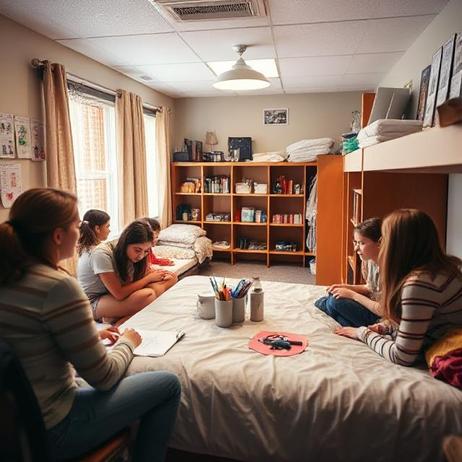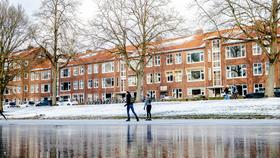Deciding to send your child to a boarding school is one of the most significant educational choices a family can make. With the evolving landscape of independent and residential schools in 2025, parents are increasingly asking the right questions about whether this pathway is truly right for their child. This article revisits the core concerns parents raise—financial, emotional, academic, and developmental—and provides updated data, context and suggestions for navigating the decision with confidence.
1. Cost and Affordability
One of the foremost concerns for many families remains the cost of boarding school. In 2025, families considering full-time residential schooling should be cognisant of the following:
According to the recent update on Boarding School Review, the average tuition (including room and board) for seven-day boarding programmes ranges between $60,000 and $80,000 per year.
For five-day boarding (students return home on weekends), the national average is closer to $55,000 annually.
Individual schools may set full boarding fees in the range of $70,000 or more—for example, one school listed tuition at $75,500 for boarding in 2025. Boarding School Review
On the aid front, nearly 40% of boarding students receive need-based or merit aid at many institutions, with some schools covering full tuition for families under specific income thresholds.
Tips for parents:
Ask the school for both the sticker price and the average net price after financial aid.
Confirm whether travel, uniforms, extracurricular trips, and health insurance are included or extra.
Investigate payment plans, scholarship opportunities, and whether the school has recently increased tuition. (Boarding school fees rose steadily into 2024–25. ivytalent.com)
Consider the longer-term investment: the value of the educational environment, alumni network and developmental opportunities may offset the cost for many families.
2. Safety, Health and Well-Being
Beyond cost, parents frequently ask: Will my child be safe? In 2025 the answer requires looking beyond traditional safety (physical security) into health systems, mental well-being, and campus community culture.
Schools are retaining many of the health-safety practices adopted during the pandemic—enhanced ventilation, routine health monitoring, and more robust residential health services.
Boarding life inherently demands that students adapt to communal living. Some children adjust readily; others experience homesickness or emotional transition challenges. One mental health professional notes that emotional shifts are “normal but should be taken into account and receive emotional support”.
It is crucial to evaluate the school’s pastoral care infrastructure: the presence of on-campus counselors, dorm staff trained in adolescent development, clear policies on bullying and peer relationships, and strong communication between staff and families.
Ask about how the school handles travel home, visitor policy, weekend supervision, and how it supports international or out-of-state students with guardian-at-distance services.
Tips for parents:
Visit the campus and ask to see the dorms, health centre and common areas.
Meet the dorm parents/residential faculty and ask: How are emotional transition and homesickness managed?
Inquire about incident reporting and how the school tracks student wellness, including mental health.
Ask for parent references from current boarding families.
3. Academic Environment and Student Outcomes
Another prominent concern: Will my child thrive academically in a boarding environment? The answer is increasingly positive in 2025, provided the match between student and school is strong.
Boarding schools continue to provide rigorous college-preparatory curricula—AP, IB, honours and specialized programmes are standard.
Many top boarding schools maintain low student-faculty ratios (often around 6:1 to 8:1) enabling individualized attention.
For parents, key questions include: What is the average class size? How does the school support differentiated learners? What are the college matriculation results?
Given that the education market is evolving, some schools have shifted more toward hybrid or flexible instruction models post-pandemic — yet the emphasis remains on in-person, residential academic engagement. Boarding School Review
Tips for parents:
Request the most recent profile: average AP/IB participation, percentage of students matriculating to four-year colleges, and alumni pathways.
Ask how the school supports students who may struggle academically, or who arrive from international/remote backgrounds.
Evaluate how the school balances academics with holistic development—preparing students socially, emotionally and for life after school.
4. Social, Emotional & Developmental Considerations
Sending a child to boarding school involves more than classroom learning—it involves living away from home, adapting socially, and developing independence. For many parents, this is both the attraction and the anxiety.
One common concern: Will my child feel lonely or cut off from home? To address this, many boarding schools now offer regular home visits, flexible weekend options, and communication platforms that help maintain relationships.
Some mental health literature highlights what has been called “boarding school syndrome”—a term used in certain contexts to describe the long-term emotional effects of prolonged residential schooling at a young age. brightontherapypartnership.org.uk While the term may carry heavy connotations, it underlines the importance of ensuring the child’s readiness and the school’s support systems.
On the positive side, many students report that boarding school fosters resilience, self-reliance and rich peer networks. Numerous alumni cite the immersive community as a formative experience. As one consulting-educator shared:
“Boarding schools offer more than sparkling Learning Centers… they serve as 24/7, holistic learning microcosms.” McMillan EducationIn 2025 many boarding schools are explicitly embedding student wellness, leadership development, and community service into the residential environment—so that the experience is not only about academics, but also about growth as a person.
Tips for parents:
Assess your child’s temperament: How has he or she managed separation, change of environment, overnight trips or travel?
Consider starting with a five-day boarding model (returning home on weekends) if available, as a step into full boarding.
Ask the school: What are your weekend and offseason programmes? How much flexibility is allowed? What is the guardian support for international and distant families?
Set clear expectations with your child: Visit together the first term, stay in regular contact, and affirm that support is available if they struggle emotionally or socially.
5. Practical Logistics: Travel, Technology, and Family Connection
Beyond the high-level concerns, practical logistics often become points of stress for families. Parents should focus on areas such as travel, communication, and technology access.
Travel: For families living internationally or far from campus, travel costs, holiday return arrangements and time-zone coordination matter. Ask how the school handles holiday breaks, transportation and emergency travel.
Technology and connectivity: In 2025, most schools will offer robust internet and study-tech, but smartphone policies, screen-time rules and connectivity for remote check-in vary widely. Review the school’s policy on devices, parental access and student-screen behaviour.
Family engagement: Ask about how parents stay involved—Are there regular parent-weekends, video calls, parental portals, dorm parent updates? A strong partnership between home and school supports student success.
Hidden costs: Beyond tuition, students may face fees for travel, term breaks, uniforms, extracurricular activities, concerts or overseas trips. Make sure these are itemised in the financial disclosure (see earlier section on cost).
Visit vs virtual experience: Whenever possible, visit the campus during a term time—or ask for a virtual tour of dorm life, evening routines and Saturday activities to assess whether the residential culture aligns with your child’s personality.
Summary and Guidance for Decision-Making
In summary, sending a child to boarding school in 2025 presents both greater opportunity and similar core concerns as in past decades. But with updated data, sharper health safeguards, expanded financial aid options and deeper emphasis on well-being, families are more empowered than ever to make informed decisions.
Steps for parents:
Clarify your goals: Why are you considering boarding? Academics, growth, independence, family circumstances?
Research thoroughly: Review cost (net price), safety & health systems, academic outcomes and the social-residential environment. Use resources like BoardingSchoolReview.com for individual school profiles.
Visit and ask candid questions: Talk to current boarding families, dorm staff and students. Evaluate how your child might fit socially and emotionally.
Plan for transition: Assume some homesickness or adjustment period. Ensure the school has a strong support system and that you as a family are committed to communication and check-ins.
Monitor and reassess: After the first term, evaluate how your child is adapting. Many schools offer flexible options or transfer to day programmes if boarding proves unsuitable.
Sending a child to boarding school is ultimately a partnership—between your family, the school and your child. With careful preparation, informed questions and ongoing engagement, the boarding experience can deliver a transformative educational and personal journey. But by focusing on cost, safety, academics, emotional fit and practical logistics, you position yourself and your child to make the most of the opportunity and minimise the concerns.















